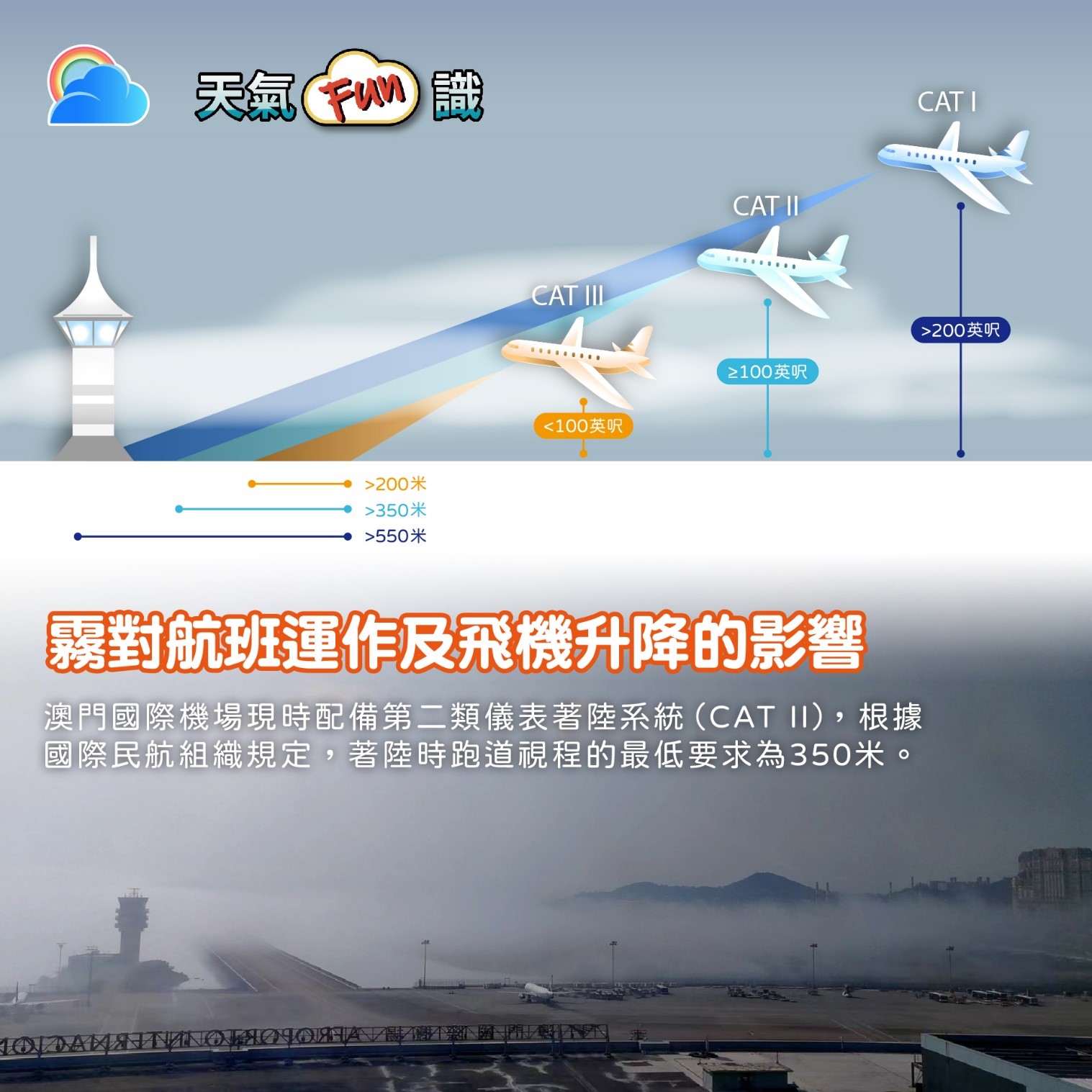Passenger Guide
Adverse Weather Conditions
Thunderstorm
Thunderstorms are one of the weather phenomena that have a significant impact on aviation safety. They can cause various weather phenomena which sometimes occur at the same time that seriously affecting aviation safety and efficiency. The most common one in Macau is lightning. Lightning may penetrate an airplane, damage the communication and navigation instrument, thus affecting pilot's operation. On the other hand, as apron and runway in airport are relatively flat, lightning poses a danger to passengers and ground handling operators who are providing aircraft ground handling, baggage and cargo loading and unloading, and other airport services. To ensure safety, staff need to seek indoors shelter and passengers on flights cannot get on and off the plane.
Thunderstorms can also cause strong turbulence, which means the flow of air becomes unstable. These turbulences are very dangerous in aviation industry. When an aircraft encounters turbulence in the sky, it is difficult to maintain a fixed altitude. It is even more dangerous when an aircraft encounters turbulence when landing. When the aircraft gets close to the ground, thunderclouds can cause gust fronts or downbursts. These airflows can deviate the aircraft from the flight path, rising or falling, posing greater risks to the takeoff and landing of the aircraft.
In addition to lightning and turbulence, thunderstorms can also lead to other conditions that affect the aviation safety, such as low visibility and icing. The takeoff and landing of aircraft follow certain requirements on the visibility of the airport runway. When visibility is too low, aircraft cannot take off or land. When an aircraft passes through a thunderstorm, the engine may be frozen, resulting in power loss of the aircraft. Therefore, thunderstorms have a great impact on aviation safety and efficiency.
Amber Thunderstorm Warning - thunderstorm is approaching and may affect the aerodrome.
Red Thunderstorm Warning - thunderstorm is directly affecting and posing immediate danger to the aerodrome.
Source: Macao Meteorological and Geophysical Bureau
Low Visibility Operation
Low visibility pose significant impact on airports, especially on air traffic operations. When visibility is low, there are flight delays, cancellations, and diversions. It can also reduce capacity for landing and takeoff operations, which induces congestion and further delays.
Why will it affect flight operations? The main reason is when an aircraft comes to the final stage of landing, pilot needs to see the runway clearly to ensure safe landing. If the visibility suddenly deteriorates at landing, the runway and ground facilities cannot be seen clearly, which poses major threat to the aircraft. Therefore, in order to ensure the safety of passengers, airports will set minimum visibility requirements for landing and takeoff. Whenever thick fog causes visibility to drop below a relevant level, an aircraft cannot take off or land. Aircraft in flight need to hover in the sky to wait for higher visibility before it can be landed. If the thick fog persists, flights may sometimes be diverted to a nearby airport.
In addition, when the aircraft meet the requirements to land in heavy fog, ground operation will be slowed down to avoid collision with aircrafts, vehicles or equipment during low visibility period, which may delay the time of passengers to disembark and retrieve their luggage. Therefore, dense fog weather is still one of the key factors affecting flight safety and flight operations.
Low Visibility Operation is implemented when Runway Visual Range (RVR) is expected to be less than 100m and/or Cloud Base Height (CBH) below 200ft within one hour or less. Landing may be affected by worst vision to the runway during poor weather conditions. However, smooth landing or take off depend on three combination factors: the instrument landing level of the runway, the instrument landing level of the aircraft and the instrument landing level of the pilot.
To mitigate the impact of low visibility, airports use various technologies and procedures to ensure safe and efficient operations. These may include instrument landing systems, ground radar, and other navigation aids that allow pilots to land and take off in low visibility conditions. Currently, runway 34 of Macau International Airport is equipped with CAT II Approach Lighting System.

Source: Macao Meteorological and Geophysical Bureau
Typhoon
Typhoon not only affects passengers, but also has serious impact on flight operations. However, tropical cyclone signal is not necessarily related to flight movements. An aircraft taking off or landing mainly depends on weather conditions such as crosswind, wind shear and turbulence. Airlines will also schedule their flights according to the overall situation and weather in Macau.
Strong winds at airport will pose danger to ground operators, also to the parked aircraft for loading or unloading, and other airport facilities on the apron. Therefore, in order to guarantee the safety for passengers and ramp operating staff, flights may be delayed or cancelled due to bad weather during typhoon.


